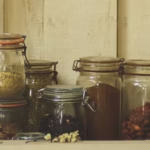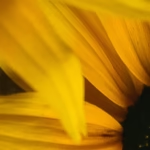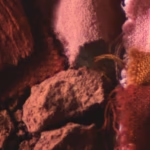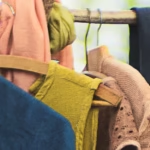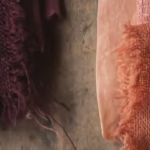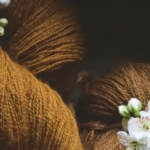With natural mordants
In botanical dyeing, we distinguish between animal fibers such as wool and silk, and botanical fibers such as cotton, linen and hemp.
This is a very important distinction when it comes to knowing how to go about dyeing textiles; more specifically, how to go about mordanting the textile. As a reminder, mordant is what is used to “fix” color.
The bite will vary according to the nature of the textile. This is particularly true when you’ve chosen not to use alum for ecological reasons. A choice I made early on in my practice, and one that didn’t make my job any easier.
So I set off on a few unmarked trails in search of plants that could help set the color.
For animal fibers, my experiments with local plants have been conclusive.
For plant fibers link in french), the task is more difficult. Because of their high cellulose content, cotton, flax and hemp have difficulty binding botanical dyes.
Textiles therefore need to be worked on beforehand for better color hold. Three steps are required.
1. Scouring
The scouring operation removes all the sizing and other residues used to make the fabric. The fabric is washed at high temperature (between 60° and 90° C) in water containing Marseille soap and soda crystals.
2. Animating the fiber
Always with a view to improving affinity, dyers around the world have devised recipes to make cellulose fiber adhere better to color by “enriching” the fiber with protein.
In the dyer’s jargon, we talk about “animating” the fiber.
Generally speaking, dyers made do with local resources.
The Japanese soak cotton in soy milk.
Indians bathe fabrics in a hot bath with sulfonated castor oil.
Milk from protein-rich herbivores such as sheep and goats was used in the same way.
For my part, I tried other alternatives with easily accessible resources. The egg has produced interesting results.
3. The natural mordant with plants
Once the fabric has been washed and “animalized” (optional step), it’s time to mordant. Plants rich in tannins are a great help. A traditional practice known as “engallage”.
But other plants are just as interesting.
There’s symplocos, of course, which is almost as effective as alum thanks to its high organic aluminum ion content. Symplocos is particularly useful for all yellow plants rich in flavonoids. They need the aluminum ion to reveal the intensity of their yellow.
A few years ago, I planted a variety of symplocos acclimatized to our latitudes. Unfortunately, the drought in the summer of 2022 proved fatal.
In my quest for 100% plant-based color, I explored other avenues, such as tea and banana peels. I invite you to discover them at our plant dyeing workshops (link in french).
I have to admit that I was pleasantly surprised by the banana peels. Considered as waste, they can be usefully recycled to make color.
I tell you all about these “botanical dye” adventures in the book Wild Dyeing: From the Garden to Color – An Introduction to Natural Vegetable Dyes.
An empirical approach, driven by a curiosity about the plants of our daily lives and a strong desire to learn from them by discovering their hidden secrets through color. That’s my only claim: to be in coherence, in resonance with nature.
